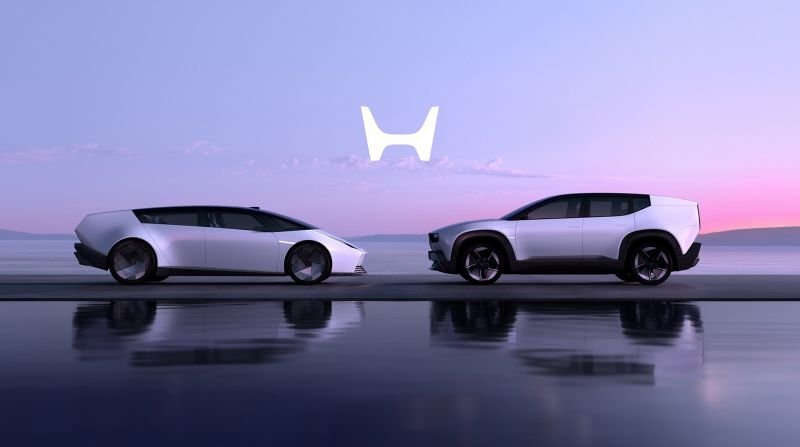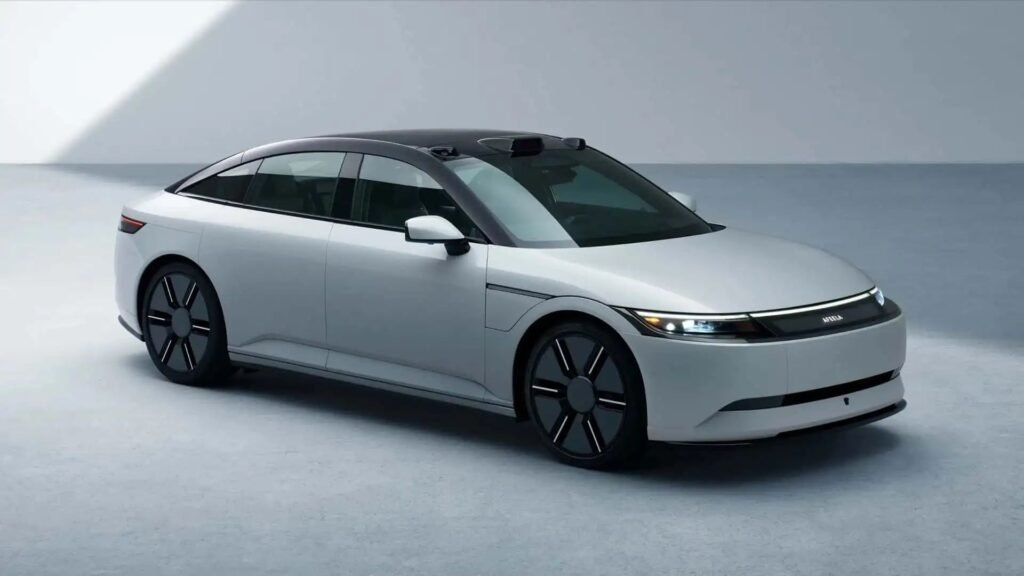
Honda’s unveiling of the 0 SUV and 0 Saloon prototypes at CES 2025 marked a significant leap in the car design philosophy.
These vehicles embody Honda’s “Thin, Light, and Wise” approach, pushing the boundaries of what we expect from electric vehicles.
The 0 Saloon, Honda’s flagship EV, showcases a bold departure from conventional designs. Its low-slung profile and wedge-shaped styling set it apart in a market saturated with similar silhouettes.
In contrast, the 0 SUV prototype presents a fascinating evolution of the Space-Hub concept introduced at CES 2024. Its design language blends elements reminiscent of the Polestar 3 and Hyundai Ioniq 9, resulting in a minimalist, almost spaceship-like aesthetic. The slightly boxier shape diverges from the typical teardrop profile seen in many SUVs, prioritizing interior space and practicality without compromising on style.
Both models feature distinctive rectangular taillights encircling a simplified Honda logo, a design cue that’s becoming a signature element of Honda’s EV lineup. This attention to detail in lighting design is crucial in creating a strong brand identity, especially at night.
Interestingly, the design approach of Honda’s 0 Series bears similarities to the journey of Hyundai’s recent models. The 2024 Hyundai Santa Fe, for instance, initially raised eyebrows with its bold, blocky profile reminiscent of certain British off-road vehicles. However, this daring design choice has since gained acceptance and appreciation among customers, much as the Hyundai Ioniq 5’s unique styling has become a hallmark of forward-thinking design.
The interior design of both 0 Series models deserves special mention. Honda has embraced a “terrace” approach to passenger and cargo space, emphasizing openness and flexibility. This philosophy is evident in the spacious cabins, which appear larger than the exterior dimensions would suggest.
From a designer’s perspective, what’s particularly impressive is Honda’s commitment to balancing form and function. The wedge-shaped designs aren’t merely aesthetic choices; they contribute to the vehicles’ aerodynamics, crucial for extending range and efficiency in EVs. Similarly, the boxy rear of the 0 SUV, while stylistically bold, serves the practical purpose of maximizing cargo space and rear passenger headroom.
In conclusion, Honda’s 0 Series prototypes represent a harmonious blend of innovative design and practical functionality.
They demonstrate that EVs can be both visually striking and highly functional, potentially setting new standards in automotive design.
As with the evolution of Hyundai’s designs, it’s likely that the initially bold choices made by Honda will pave the way for a new era of EV aesthetics, challenging and ultimately reshaping consumer expectations in the electric vehicle market.



